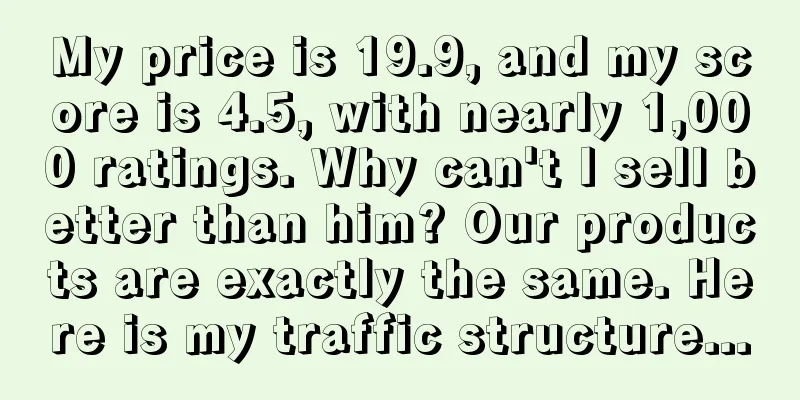A surge in the purchase of returned goods is emerging in the United States, with Amazon and Walmart accounting for the highest share

|
It is learned that according to foreign media reports, a new shopping craze has emerged across the United States recently, with thousands of people flocking to places called "junk box stores" to buy returned goods from Amazon and Walmart. It is reported that these "junk box stores" are also called "crazy box", "hot box" or "cheap box", and have attracted a large number of followers on TikTok. Americans returned $816 billion worth of goods purchased online last year, according to the National Retail Federation (NRF). Owners of “dumpster stores” buy products that cannot be resold and sell them to consumers at a fraction of the price. The items sold at the "junk box stores" include children's toys, accessories, iPads and other technology products, with prices typically starting at around $10 per item and going down further over time. In the "trash box store", in addition to the clearly marked goods, customers can also purchase a "mystery bag" (similar to a blind box), which contains a box of unspecified goods, priced as low as $15. Recently, on TikTok, an account called "Juliet's Finds" showed in a video that she opened a sofa from a $50 "mystery bag" that was returned from Walmart. "Almost everything in these stores is returned from Amazon, Walmart, etc., but they are all new," said the creator, who has 171,000 followers. Another user named Tara Woodcox shared her purchases from the "junk box store," including a night light, a tray and some headbands for just $4 each. In addition, major social media platforms in the United States are now flooded with stories about "dumpster divers" buying returned goods and then reselling them online to make a profit. It is learned that with the rise of online shopping, returns have become an increasingly troublesome problem for online retailers. NRF estimates that about 16% of sales were returned last year, an increase from 10.6% in 2020. When customers return products by mail, retailers incur several fees, including prepaid postage as well as logistics, handling and repackaging costs. The NRF estimates that retailers pay $33 for each return they process. Notably, this trend has forced 40% of online stores to start charging customers to defend against refund costs. For example, Zara, American Eagle Outfitters, and Urban Outfitters currently charge refund fees of $5 or less. Meanwhile, H&M charges its non-loyalty members $5.99 for "return shipping." TJ Maxx charges the highest at $11.99, followed by DSW at $8.50. Editor ✎ Nicole/ Disclaimer: This article is copyrighted and may not be reproduced without permission. |
<<: CPSC urgently recalls this air fryer! 41 accidents have occurred!
Recommend
What is Fangxin Intellectual Property? Fangxin Intellectual Property Review
Shenzhen Fangxin Intellectual Property Agency Co.,...
New trend! How to use Tiktok to bring 500% free traffic to Amazon?
Under the global epidemic in 2020, many sellers on...
Amazon enters Australia: A brief analysis of the Australian e-commerce environment and product category recommendations
August 24, 2017 20:10 (China Time) Topic: Introduc...
Big news! Prime Day may be held in June? Amazon advertising bug reappears
As a partner of the world’s richest man, the Amazo...
The seller should repay the 4 million yuan debt? Another Shenzhen freight forwarder went bankrupt!
At this stage, with the collision of various platf...
Snowstorm sweeps across 16 states, affecting 55 million people, and goods bound for the United States are once again...
Since the second half of this year, many things h...
What is a good Chinese seller? Chinese Good Seller Review
China Good Sellers is a valuable opportunity for h...
A guide to riding traffic during Amazon Prime Day
1. Price reduction promotion For example, buy one...
Macy's 2021Q4 sales and profits exceeded expectations! Online business performed outstandingly!
AMZ12 learned that despite Macy's facing many ...
Amazon bucks the trend and rises! Primeday starts reporting in advance
Buffett has only seen 5 U.S. stock market circuit...
Teach you how to register ChatGPT step by step, super detailed
If you need information and services, please add ...
Canadian online consumer demand is weak! Many categories performed poorly in November
<span data-docs-delta="[[20,"获悉,根据万事达卡Spen...
What is melark? melark review
Melark is a private domain service marketing and u...
Social media influences 25% of cosmetics purchases in the United States! TikTok has greatly increased sales in this category
It is learned that according to NPD, in the post-e...
What is Youpinghui? Youpinghui Review
Youpinghui was founded in 2016 and is committed to...









